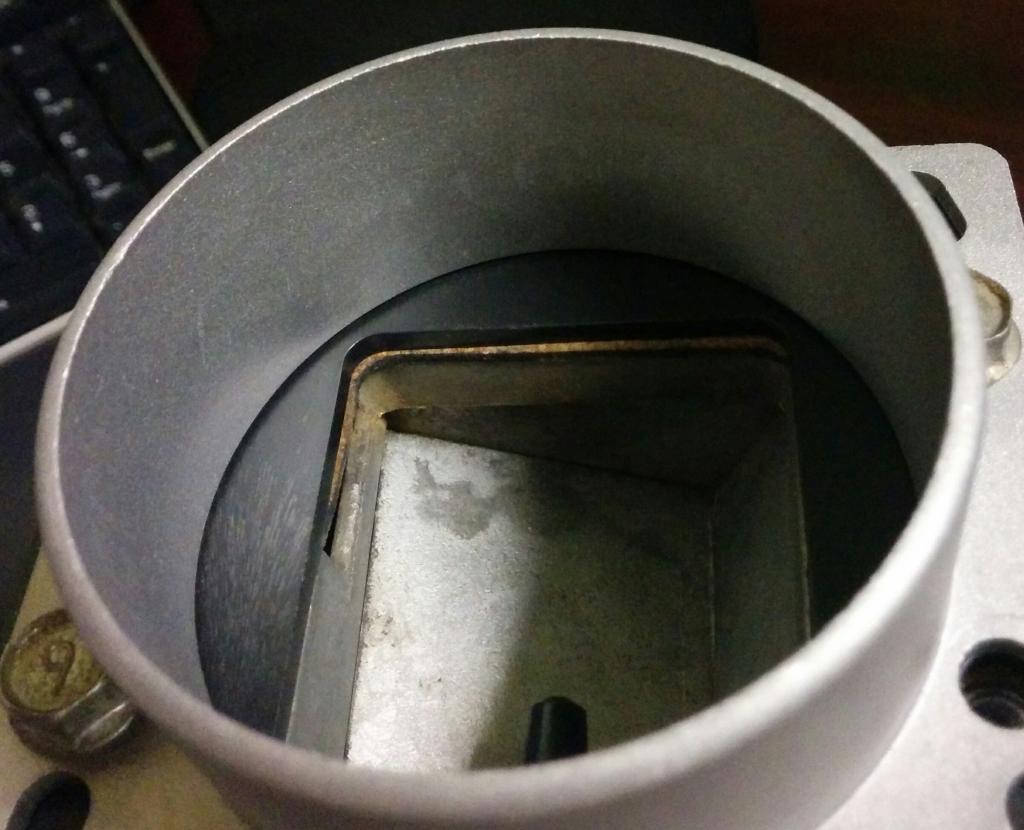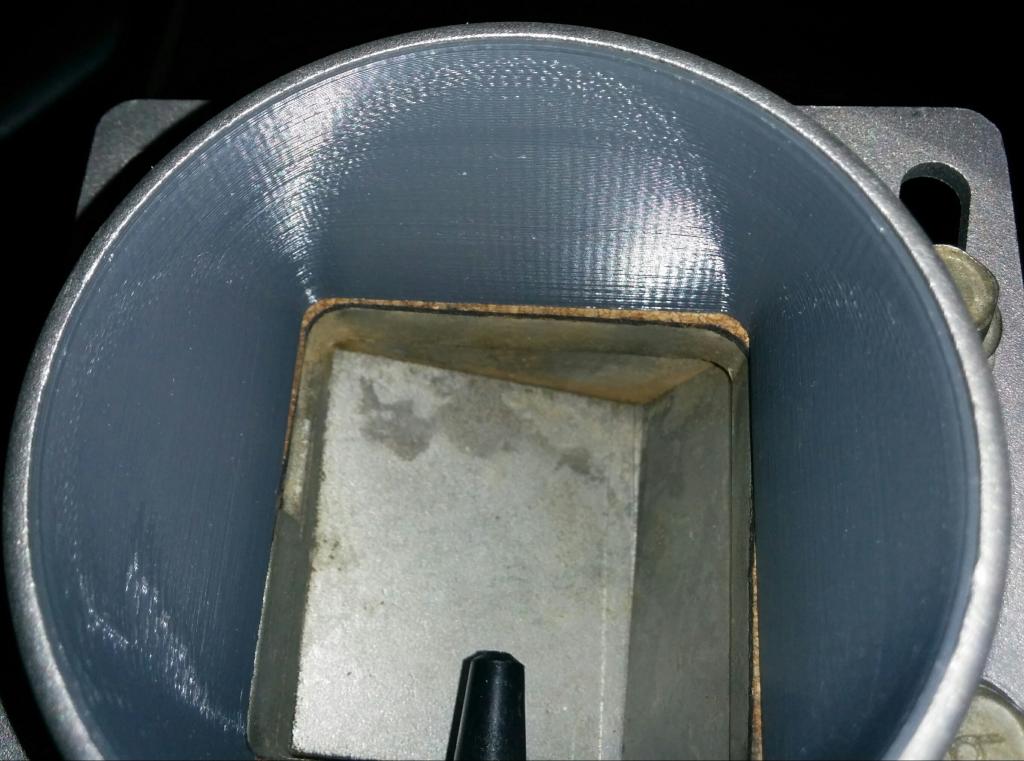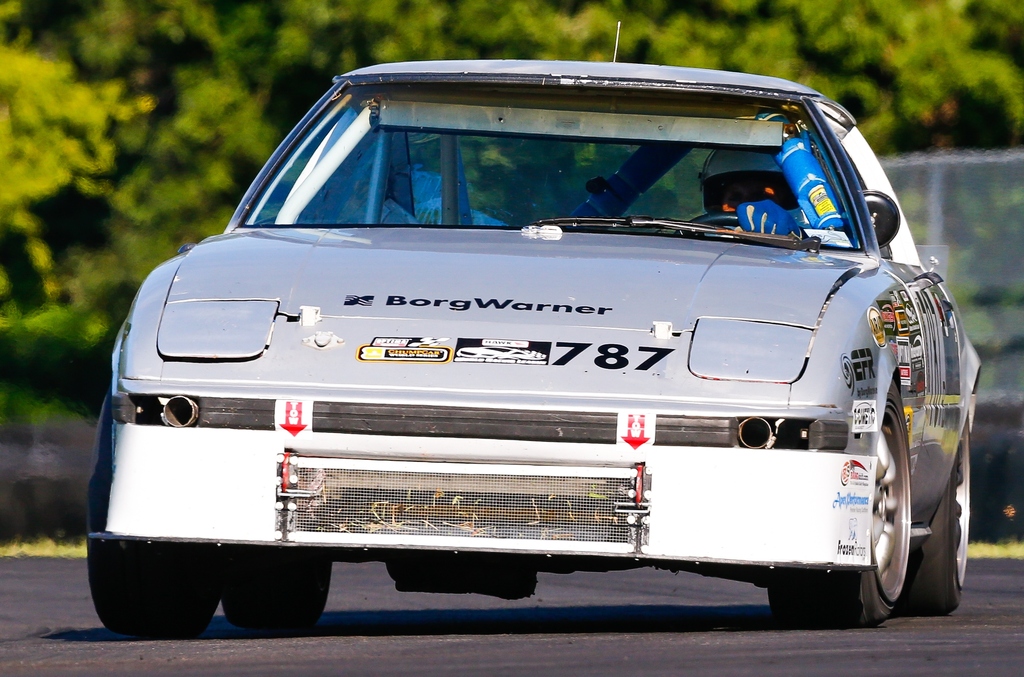Tire Pressures for the track
#1
Tire Pressures for the track
I'm struggling with oversteer at track days and before I go getting new tires, I'm wondering if tweaking the tire pressures will help. I've got Yokohama S.Drives 205/50R15 mounted on 7" rims. I've tried 35psi cold, in the dry, eventually started losing grip when I pushed the car closer to the limit. 30 psi cold, it was wet, and rear end was all over the place. This last event I tried 30F/28R and checked after each session to keep them at 30F/28R even after they warmed up. I don't know if I'm going in the wrong direction or not but the rear end still won't hook up.
#3
I have the racing beat sway bar hooked up. I disconnected it in the wet but it didn't help all that much. I connected it back this week. I was going to disconnect it after a few sessions again but forgot my jack. I have all stock bushings in the rear.
#5
Moderator
iTrader: (3)
Join Date: Mar 2001
Location: https://www2.mazda.com/en/100th/
Posts: 30,780
Received 2,565 Likes
on
1,824 Posts
cold pressures should probably be 26-30, and hot pressures should be 32-38.
i admit i don't have a lot of experience running street tires at the track, so you need to find the tires happy spot. find or bring some kind of air, and try a low pressure and a high pressure, back to back, and then try a middle. this will at least narrow down the range that the tires like.
the other thing you can do is just to drive it differently. figure out when the rear steps out (under braking? corner entry? corner exit?), and then you can start to figure out how to keep it planted.
its skill that the fast guys develop, often to a fault
i admit i don't have a lot of experience running street tires at the track, so you need to find the tires happy spot. find or bring some kind of air, and try a low pressure and a high pressure, back to back, and then try a middle. this will at least narrow down the range that the tires like.
the other thing you can do is just to drive it differently. figure out when the rear steps out (under braking? corner entry? corner exit?), and then you can start to figure out how to keep it planted.
its skill that the fast guys develop, often to a fault
#6
Our 200-320 TW tires for endurance racing seem to work best at 36-38psi on track. Dunlop Direzza Star Spec, Falken Azeni, BF Goodrich Rival and Sport Comp 2, Bridegestone (whatever the alphanumeric name is). Sometimes you have to look at your driving style too though as j9FD3S said.
#7
Ok, so it sounds like I was hovering around the right mark but probably too low when I was at 30F/28R hot. Should I be running lower rear pressures? Some sources say to increase rear pressure to reduce oversteer but won't that just decrease the contact patch?
Trending Topics
#8
I have always ran a square hot tire pressures on my race car - same front to rear. Starting pressures will vary depending on the track if it has more of one kind of turn than another. But the goal is to get them all up to the same pressure and an even heat distribution across the tread face.
I you don't have access to a tire pyrometer you can use chalk to find the optimum tire pressure.
1. Place 2-3 chalk marks on shoulder or each tire on your car.
2. Set cold pressures with the assumption that you will gain 7-9PSI during your track session
3. Examine the chalk marks after your session
If all of the chalk is gone and there is evidence of scuff marks on the side wall of the tires - your tire pressures are too low
If allot of the chalk remains on shoulders of the tires - your tire pressures are too high
Ideally you want to see wear all the way to the edge of the tire's shoulder with some scuffing wrapping around the shoulder. There should be no scuffs on the sidewall of the tire above the shoulder.
In racing/performance driving situations you want to run higher tire pressures to help the tire maintain a proper shape relative to the road. Under inflated tires roll under on during corning which reduces the tires contact patch with the road. Even on a straight, an under inflated tire will lose contact in the middle of the tread face as speeds increase.
Higher pressures also increase the effective spring rate of each corner of the car. So you can play with tire pressures to correct for handling issues. If you have make radical pressure changes to make a car drive right you have an alignment or setup issue.
I you don't have access to a tire pyrometer you can use chalk to find the optimum tire pressure.
1. Place 2-3 chalk marks on shoulder or each tire on your car.
2. Set cold pressures with the assumption that you will gain 7-9PSI during your track session
3. Examine the chalk marks after your session
If all of the chalk is gone and there is evidence of scuff marks on the side wall of the tires - your tire pressures are too low
If allot of the chalk remains on shoulders of the tires - your tire pressures are too high
Ideally you want to see wear all the way to the edge of the tire's shoulder with some scuffing wrapping around the shoulder. There should be no scuffs on the sidewall of the tire above the shoulder.
In racing/performance driving situations you want to run higher tire pressures to help the tire maintain a proper shape relative to the road. Under inflated tires roll under on during corning which reduces the tires contact patch with the road. Even on a straight, an under inflated tire will lose contact in the middle of the tread face as speeds increase.
Higher pressures also increase the effective spring rate of each corner of the car. So you can play with tire pressures to correct for handling issues. If you have make radical pressure changes to make a car drive right you have an alignment or setup issue.
#9
Full Member
Chalking idea is very sound. Several of the people who I observe during autocross tuning use this technique. For me I still run 35/35 but I have yet to get any serious rotation while autocrossing. Still leaving a lot of time on the course. Once I gain more experience, and speed I will start chalking tires. All four tires have similar wear patterns on shoulders. I salute you (and anyone else) running a vintage RX7 and pushing it. I run CSP and get killed by Miatas every time, but nothing feels/sounds like a rotary running hard.
My mods; RB springs, stock sway bars, KYB struts/shocks (my go to difference rears), Hawk front pads, SS lines, stock Nikki, RB street port exhaust system, 15x7 Konigs, 195x50x15R Dunlop Direzza DZ102.
A lot of the hot shoes are using Bridgestone RE-71R.
My mods; RB springs, stock sway bars, KYB struts/shocks (my go to difference rears), Hawk front pads, SS lines, stock Nikki, RB street port exhaust system, 15x7 Konigs, 195x50x15R Dunlop Direzza DZ102.
A lot of the hot shoes are using Bridgestone RE-71R.
#10
So I've got some video and photos from the last track night. If this doesn't start at 5:30 you can jump ahead to see the oversteer issue. Tires were at 30F/28H measured right after the previous session. The car is setup up with Racing Beat springs and sway bars with Tokico HP (Blue) shocks.
#11
Senior Member
#12
Mike,
Are those little circles in the turn signal location your brake ducts? If so, you could get more (probably a lot) flow by making a "funnel" shape. Much lower pipe entrance pressure drop will leave you with more pressure drop available for increased flow through the ducting. Or maybe that costs more in chump points?
Carl
Are those little circles in the turn signal location your brake ducts? If so, you could get more (probably a lot) flow by making a "funnel" shape. Much lower pipe entrance pressure drop will leave you with more pressure drop available for increased flow through the ducting. Or maybe that costs more in chump points?
Carl
#13
Looks like you've got similar sidewall flex in your photo as me, probably more. I checked the sidewalls of my tires. There is an arrow which I believe marks the edge of the usable tread. I shaved off the very tip of it, so next time out I'm going to run slightly more air. It sounds like I have been in the right ballpark so next outing I'll be disconnecting that rear sway bar and if that doesn't tighten things up I'm going to overhaul the rear bushings.
#14
Senior Member
Mike,
Are those little circles in the turn signal location your brake ducts? If so, you could get more (probably a lot) flow by making a "funnel" shape. Much lower pipe entrance pressure drop will leave you with more pressure drop available for increased flow through the ducting. Or maybe that costs more in chump points?
Carl
Are those little circles in the turn signal location your brake ducts? If so, you could get more (probably a lot) flow by making a "funnel" shape. Much lower pipe entrance pressure drop will leave you with more pressure drop available for increased flow through the ducting. Or maybe that costs more in chump points?
Carl
At the risk of totally derailing his tier pressure thread… I have thought about making some entrance funnel pieces for my brake cooling hoses. The good thing for my application is that the inlets are pretty much right on the leading edge of the car so they get undisturbed air. Many of the applications where you use inlet convergence is an attempt to gather up disturbed air and get it all moving in the direction that you want it to go. Using the turn signal holes limits me to a 2.5 inch hose instead of the more common 3 inch hose. That is not necessarily a terrible thing, I have the hose mounted as close as possible to the center of the rotor and the 2.5 inch hose still overlaps onto the face of the rotor so I am getting the maximum amount area directed to the center of the rotor to be pulled through the vanes without going to an oval pipe in that area. I know that I am getting plenty of air to the center of the rotors by how much rubber I have to clean out of the vanes after every race, screens on the inlets are another thing on my to do list. I get very good pad and rotor life since I changed to the second gen big brakes and don't see any signs of overheating the wheel bearings.
On the other hand I design complex aerodynamic parts all day, right now I am doing a CFD of how turbine outlet flow and wastegate flow combine at the inlet of a close coupled catalytic convert brick. If I did design something I would make it fit very flush to the front bumper cover and probably make the parts on our 3D printer, I did something similar back when I was running an air flow meter and I printed an adapter to go from the 3 inch air filter piping to the square inlet to the meter.


#15
Man you have some fun toys at work. Let me know the results of a CFD (if you do it) on your brake inlets.
At the risk of totally derailing his tier pressure thread… I have thought about making some entrance funnel pieces for my brake cooling hoses. The good thing for my application is that the inlets are pretty much right on the leading edge of the car so they get undisturbed air. Many of the applications where you use inlet convergence is an attempt to gather up disturbed air and get it all moving in the direction that you want it to go. Using the turn signal holes limits me to a 2.5 inch hose instead of the more common 3 inch hose. That is not necessarily a terrible thing, I have the hose mounted as close as possible to the center of the rotor and the 2.5 inch hose still overlaps onto the face of the rotor so I am getting the maximum amount area directed to the center of the rotor to be pulled through the vanes without going to an oval pipe in that area. I know that I am getting plenty of air to the center of the rotors by how much rubber I have to clean out of the vanes after every race, screens on the inlets are another thing on my to do list. I get very good pad and rotor life since I changed to the second gen big brakes and don't see any signs of overheating the wheel bearings.
On the other hand I design complex aerodynamic parts all day, right now I am doing a CFD of how turbine outlet flow and wastegate flow combine at the inlet of a close coupled catalytic convert brick. If I did design something I would make it fit very flush to the front bumper cover and probably make the parts on our 3D printer, I did something similar back when I was running an air flow meter and I printed an adapter to go from the 3 inch air filter piping to the square inlet to the meter.


On the other hand I design complex aerodynamic parts all day, right now I am doing a CFD of how turbine outlet flow and wastegate flow combine at the inlet of a close coupled catalytic convert brick. If I did design something I would make it fit very flush to the front bumper cover and probably make the parts on our 3D printer, I did something similar back when I was running an air flow meter and I printed an adapter to go from the 3 inch air filter piping to the square inlet to the meter.





